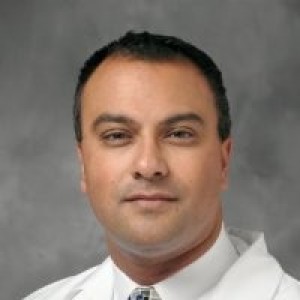- Video Library
- Nikhil Shah Presents Nephrodite at LSI USA ‘23
Nikhil Shah Presents Nephrodite at LSI USA ‘23

Nikhil Shah
Mr. Shah will share the story of Nephrodite at Emerging Medtech Summit and will discuss partnering and investment opportunities.
Dr. Nikhil L. Shah currently serves as the System Chief for Minimally Invasive and Robotic Surgery at Piedmont Health Care based in Atlanta, Georgia. Dr. Shah has performed thousands of minimal access and robotic procedures with specific expertise in Genitourinary Oncology and urinary tract reconstruction. In addition, his interest and expertise in digital Surgery, intelligence, advanced-integrated imaging as well as automation as they apply to the patient-care continuum define his passion as a progressive Physician Leader.
Dr. Shah completed his undergraduate training at the University of Michigan and Medical School at the Kirksville College of Osteopathic Medicine. In medical school, Dr, Shah received a highly coveted research award funded in part by the National Institutes of Health. His training in General Surgery was at the Henry Ford Hospital in Detroit and followed with subspecialty training in Robotics, Laparoscopy and Urological Oncology at the Vattikuti Urology Institute at Henry Ford Health Systems in Detroit. During residency, Dr. Shah additionally completed a National Institutes of Health - National Institute of Diabetes and Kidney Urologist-Scientist Research Fellowship at the University of Michigan in Ann Arbor. Concurrently to his time in the laboratory, he completed a Master’s degree in Health Management & Policy at the University of Michigan’s School of Public Health and the Ross School of Business.
Dr. Shah is the recipient of numerous awards and has authored many peer-reviewed publications. He is acknowledged as an established leader in minimally invasive surgical applications. He holds an adjunct Associate Professorship at the Georgia Institute of Technology. Dr. Shah has made several appearances on CNN with Dr. Sanjay Gupta regarding Robotic Surgery and Men’s Health. In addition, Dr. Shah serves as an active advisor to the medical technology industry and the financial sector involved with innovative technology, medical devices, simulation and new surgical training applications.
Dr. Shah’s continues translational efforts by bridging the gap between health care issues, science and medicine. He speaks about the changes in health care from the perspective of a Physician Leader focusing on improving quality through metrics, analytics and outcomes analysis. Dr. Shah also continues to receive extramural funding in an effort to increase complimentary, preventive and advanced technology therapies to his patients.
Nikhil Shah
Mr. Shah will share the story of Nephrodite at Emerging Medtech Summit and will discuss partnering and investment opportunities.
Dr. Nikhil L. Shah currently serves as the System Chief for Minimally Invasive and Robotic Surgery at Piedmont Health Care based in Atlanta, Georgia. Dr. Shah has performed thousands of minimal access and robotic procedures with specific expertise in Genitourinary Oncology and urinary tract reconstruction. In addition, his interest and expertise in digital Surgery, intelligence, advanced-integrated imaging as well as automation as they apply to the patient-care continuum define his passion as a progressive Physician Leader.
Dr. Shah completed his undergraduate training at the University of Michigan and Medical School at the Kirksville College of Osteopathic Medicine. In medical school, Dr, Shah received a highly coveted research award funded in part by the National Institutes of Health. His training in General Surgery was at the Henry Ford Hospital in Detroit and followed with subspecialty training in Robotics, Laparoscopy and Urological Oncology at the Vattikuti Urology Institute at Henry Ford Health Systems in Detroit. During residency, Dr. Shah additionally completed a National Institutes of Health - National Institute of Diabetes and Kidney Urologist-Scientist Research Fellowship at the University of Michigan in Ann Arbor. Concurrently to his time in the laboratory, he completed a Master’s degree in Health Management & Policy at the University of Michigan’s School of Public Health and the Ross School of Business.
Dr. Shah is the recipient of numerous awards and has authored many peer-reviewed publications. He is acknowledged as an established leader in minimally invasive surgical applications. He holds an adjunct Associate Professorship at the Georgia Institute of Technology. Dr. Shah has made several appearances on CNN with Dr. Sanjay Gupta regarding Robotic Surgery and Men’s Health. In addition, Dr. Shah serves as an active advisor to the medical technology industry and the financial sector involved with innovative technology, medical devices, simulation and new surgical training applications.
Dr. Shah’s continues translational efforts by bridging the gap between health care issues, science and medicine. He speaks about the changes in health care from the perspective of a Physician Leader focusing on improving quality through metrics, analytics and outcomes analysis. Dr. Shah also continues to receive extramural funding in an effort to increase complimentary, preventive and advanced technology therapies to his patients.

17011 Beach Blvd, Suite 500 Huntington Beach, CA 92647
714-847-3540© 2025 Life Science Intelligence, Inc., All Rights Reserved. | Privacy Policy







